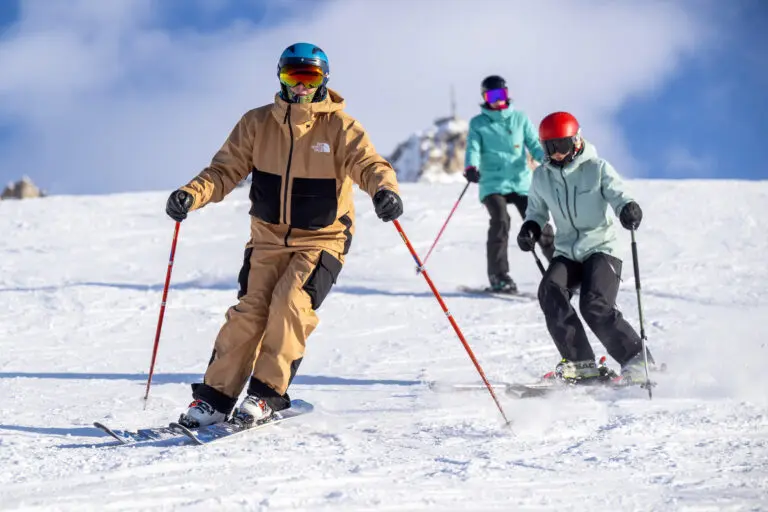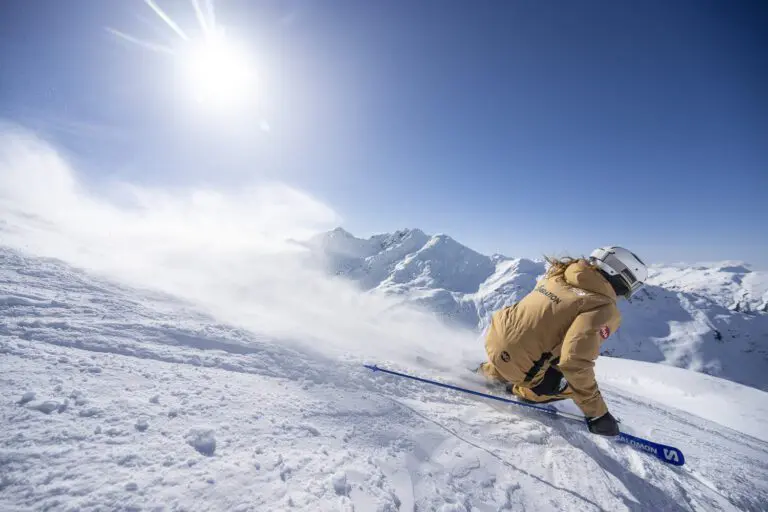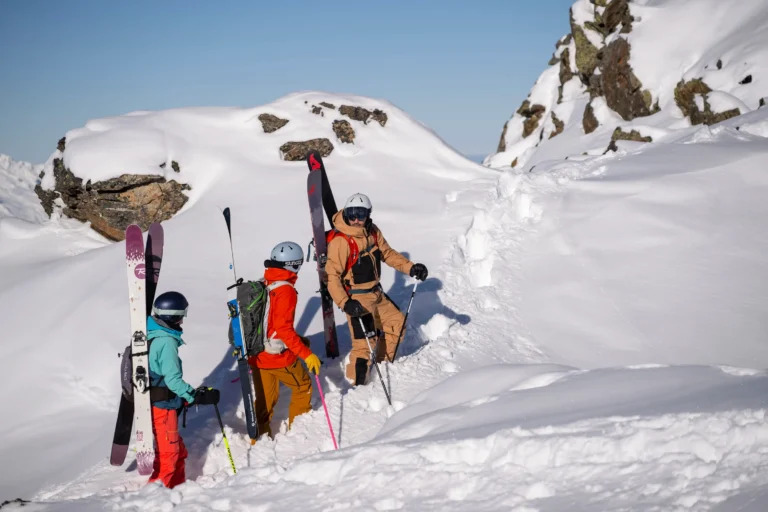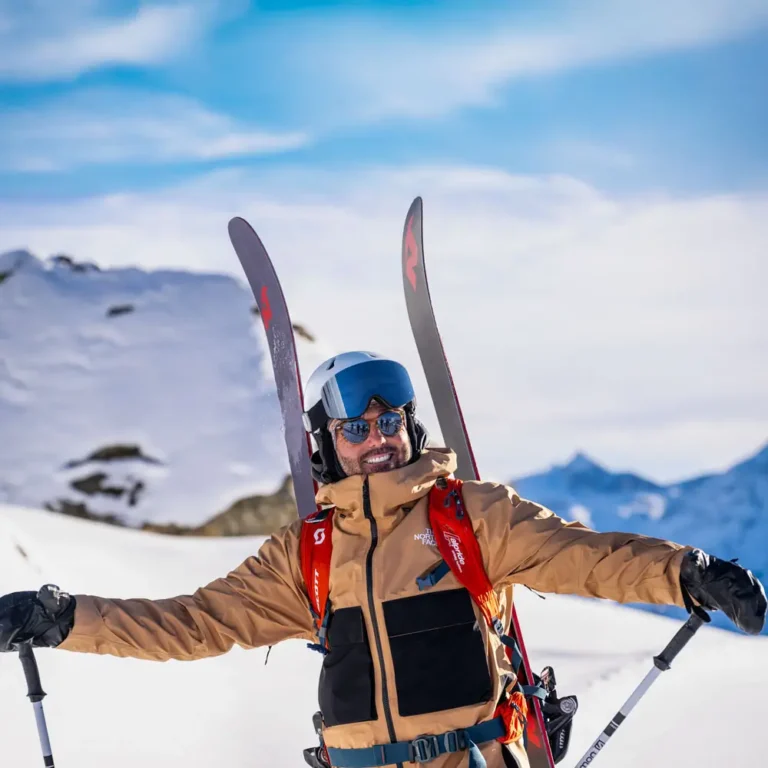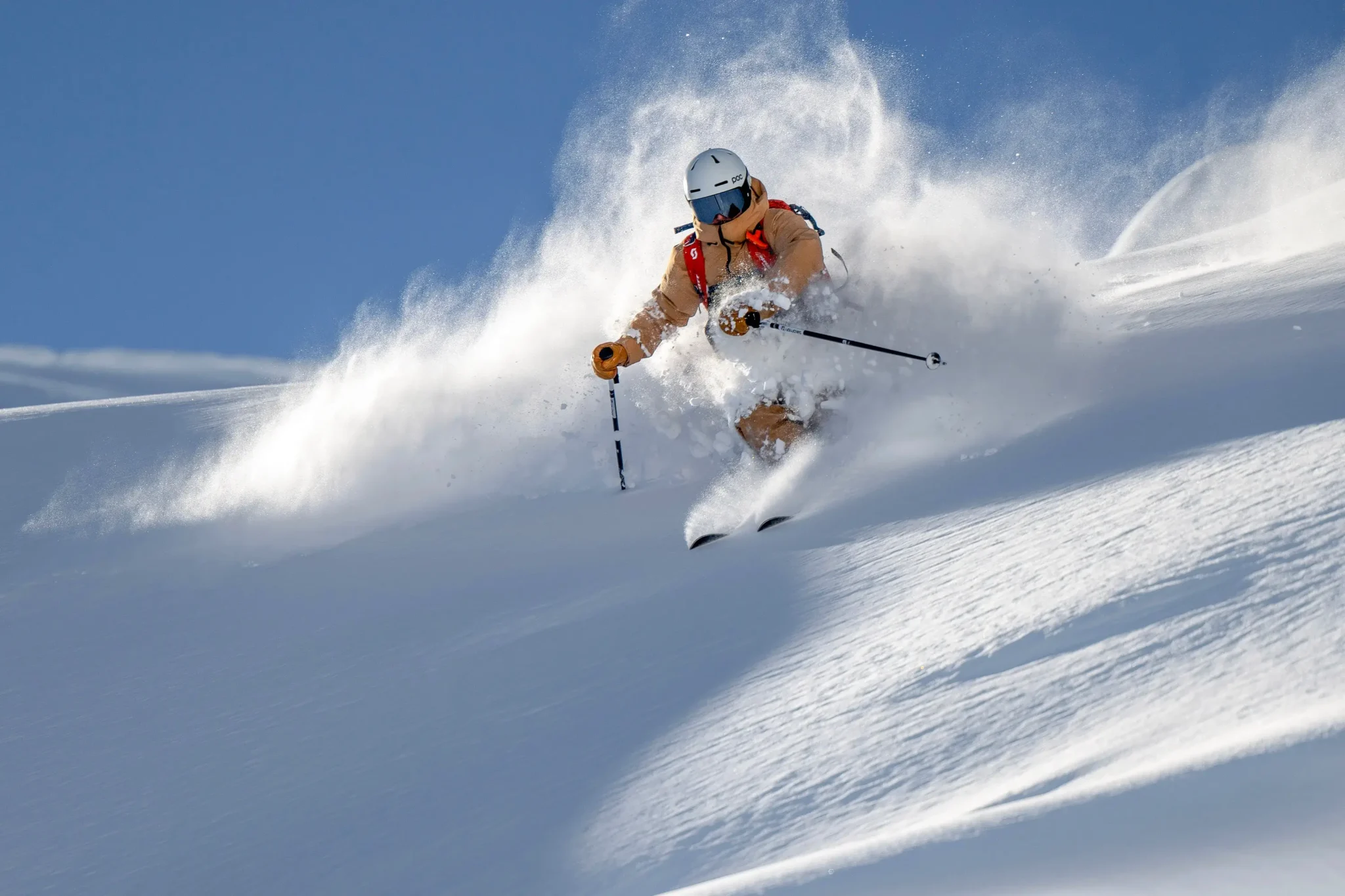Gear Checklist for Off-piste Programmes
Here’s a list of essential equipment for our off-piste courses.
Complete Checklist
Essential off-piste safety equipment.
If you don’t have any of the following essential items, please let us know in advance. We can provide transceivers, shovels and probes free of charge when requested at the time of booking. We’re happy to advise on other equipment.
Avalanche transceiver – With batteries charged to atleast 85% and set to transmit mode.
Shovel – Lightweight metal shovels with removable handles are ideal.
Probe– At least 2m long
Backpack – Around 20 litres of capacity with chest and waist straps.
Personal Equipment
Skis – Off-piste skiing is easier on skis that are wider than your typical piste skis. Look for models with a width of over 95mm underfoot and rocker profiles. Ensure your skis are properly serviced.
Boots – Alpine ski boots are fine for off-piste courses, some guests use touring boots.
Poles – +5cm longer than what would be used on piste with large baskets.
Helmet – Well fitting and not damaged.
Goggles – With appropriate lens for varying light conditions.
Gloves
Spare Gloves
Jacket and Salopettes.
Insulating layers – Several lightweight layers that can be put on or removed.
Socks – Long enough to ensure that the entirety of the shin is covered but as thin as possible.
Mobile Phone – Fully charged with important contact numbers, including the New Generation Office (+44 1462 674 000) and local emergency services (112).
Lift Pass – Lift pass for planned skiing area.
Optional Extras
Avalanche Airbag
First Aid Kit
Repair Kit – Duct tape, Zip ties, and a Multi-tool with a screwdriver.
Water
Lip Balm
Sun Cream
Snacks – Off-piste skiing can be tiring.
More on Avalanche Safety Equipment
When it comes to off-piste skiing, safety is paramount. Avalanche safety gear is non-negotiable and includes three essential components:
Transceiver
A transceiver is your lifeline in an avalanche. Worn by every member of your group, it emits signals that rescuers can detect if you’re buried under snow. Make sure it’s fully charged and set to transmit mode before you hit the slopes. Regular checks and practice using the device are vital to ensure you’re prepared in case of an emergency.
Shovel
A lightweight metal shovel with a removable handle is ideal for off-piste skiing. Always carry a shovel as part of your essential safety equipment—compact yet sturdy models are recommended.
Probe
An avalanche probe is crucial for pinpointing the location of a buried person. When assembled, probes are 2–4 metres long, made of metal, and have depth markers to determine how deeply someone is buried. Make sure you know how to assemble and use your probe efficiently.
Backpacks
Having the right backpack is key for off-piste skiing. You’ll need a pack with a capacity of at least 20 litres and waist and chest straps to keep it snug against your body while you ski. This will keep the weight close to your centre of mass, reducing strain and ensuring better balance. This is important in challenging terrain, where stability is crucial.
Backpack features to consider
Look for backpacks with ski carry systems, which are essential if you encounter short hikes where you’ll need to carry your skis. Avalanche airbags can add an extra layer of safety, though they do come at a weight disadvantage. Avoid hydration systems, as they may freeze in cold temperatures.
What to check before leaving your accommodation
Weather
Double-check that you have appropriate clothing and layers for the day.
Avalanche Risk
Your instructor is responsible for your safety during the course. However, it is good practice to start improving your own understanding of avalanche risk and the factors that influence it.
The type of weather in the days and weeks leading up to an off-piste session will be crucial in determining the types of snow encountered. This can affect factors like avalanche risk. A simple way of determining how the weather has affected the safety of off-piste conditions is to always check the off-piste risk level warning. Most ski lifts, ticket offices, and large piste maps will display these around resorts.
Level 1 – ‘Low’ risk of avalanches. This doesn’t mean a zero chance.
Level 2 – ‘Moderate’ risk. Conditions are stable. Some avalanches are evident on steep faces.
Level 3 – ‘Considerable’ risk. Offers a false sense of security by the fact that this is in the middle of the scale. Most avalanche fatalities and accidents occur at this risk level.
Level 4 – ‘High’ risk. We strongly discourage going off-piste if there is a high-level warning.
Level 5 – ‘Very high’ risk. At this level, a number of lifts will be closed and runs unavailable. Do not venture off-piste if this warning level is shown. Follow the instructions of pisteurs and signs indicating closed runs.
For more information, check out our guide on how to read Avalanche signs.
